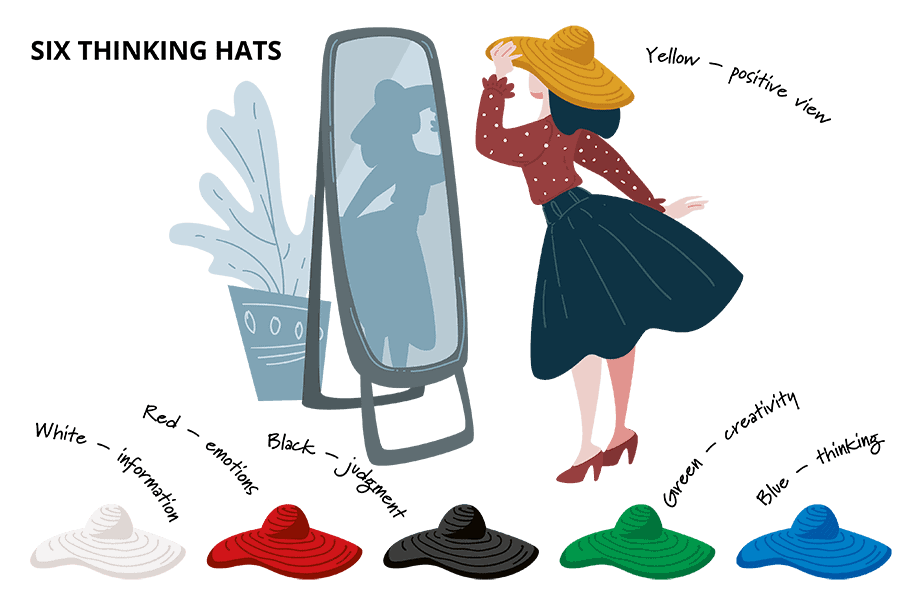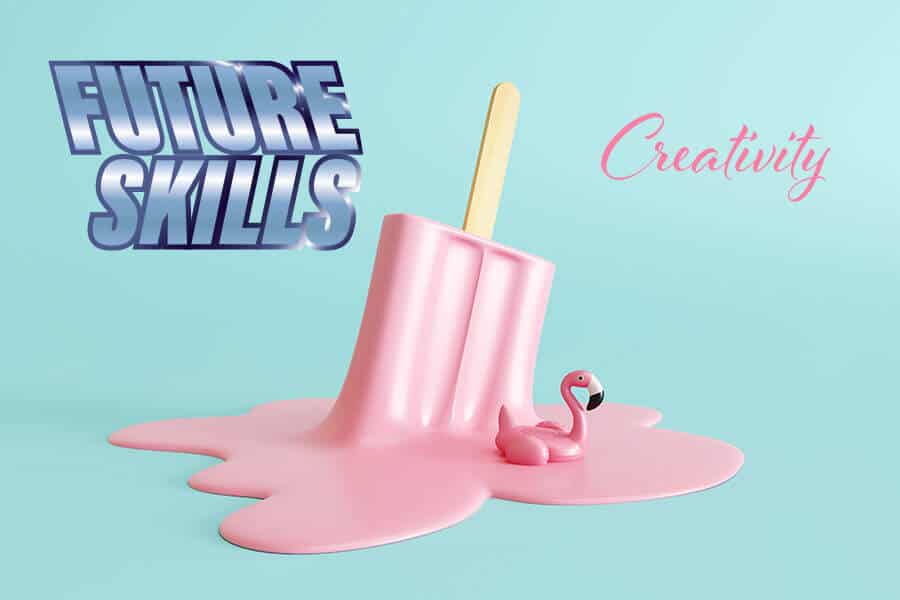With the rise of automation comes the rise of soft skills. The landscape of work is shifting; and in order to keep up with the change, workers need to develop competencies that machines won’t tackle. In this series we talk about the top 10 soft skills that will help you to thrive in 2020. And today’s skill is creativity.
What is Creativity?
Creativity is the ability to look at something in a new way, finding new approaches to completing tasks and increasing productivity. This skill involves lateral thinking, which is a way of solving problems by using an indirect approach as opposed to traditional, step-by-step logic.
“Thinking outside the box” allows you to notice patterns that are not obvious. Such an unorthodox approach can add fresh perspective and open new dimensions for work and business. And for that, creativity is a valuable skill that you need to show a potential employer through your work experience and the projects you have taken on.
Tips to Develop Creativity
You can improve or develop creativity through implementing small habits and changes to your daily routine. Try solving riddles, challenging your assumptions, and introducing periods of daydreaming into your workflow. Here are a few more tips that are easy to practice without having to change your work routine completely.
Change your surroundings

A small change in your daily environment can add freshness to mundane tasks. Tiny details such as a cup of tea, a new set of stationery, or simply changing the setup of your desk could help you to add a bit more creativity.
According to a 2014 study, altering student seating arrangements can have beneficial effects, including improved class participation, behavior, and academic performance. Sit with new colleagues at lunch and take advantage of working in different areas of the office or simply making adjustments to your workspace.
Take calculated risks
The fear of failing tends to prevent us from being brave about thinking outside the box. Remove your limits and see where your mind will take you. Even if your ideas result in failure, they might bring new insight.
Before taking risks, consider doing lots of research on the topic, being ready for mistakes, setting checkpoints to track your goals, and having in reserve an alternative set of actions. For more practical tips on calculated risk taking, refer to this article.
Keep an open mind
Don’t be quick to judge when you encounter new ideas. Less than 5% of all suggested ideas can come to fruition, thus it is important to deal gently with the remaining 95%. The initial stress that we experience when encountering a new idea prevents us from being “friendly” to it. You may want to put a given idea aside to allow some time for it to feel more familiar. With this in mind, practice avoiding saying “but” when someone gives you an idea. “But we can’t”, “but we don’t have money” and similar limitations stop creativity and prevent ideas from developing. Alternatively, try using “yes, and” and see what happens.
Applying traditional methods won’t lead you to an untraditional result. Before you set a specific procedure and an action plan, allow some time to explore ways to achieve the goal. Now that you know that a little change can go a long way when it comes to boosting creativity, here are a few practical methods to generating creative ideas.
Brainstorming and Negative Brainstorming
Brainstorming is a well-known technique for generating solutions for a specific topic. It is important to note all ideas, whether they are feasible, practical, or unrealistic. Avoiding instant judgment allows all participants to express ideas freely, which can result in finding a workable solution.
Negative brainstorming is an alteration of this technique, and there are two steps to the process. First, you need to generate bad solutions to the problem and then see which ideas can be transformed into good solutions.
What-Iffing
One of the typical blocks to creativity is our mind’s grasp on reality and the inability to imagine alternative possibilities. It is ever so natural to avoid situations when one can say, “That sounds ridiculous,” or “This would never work.” However, asking “What if” questions allows your mind to be released from being blocked by reality.
Imagining alternative outcomes can cause a ripple effect and set in motion thinking about changing consequences. For example, what if countries switched to online payments only? Consequences: people would stop using wallets, manufacturers would have to find alternative products, etc.
Six Thinking Hats Techniques
Six Thinking Hats or Edward de Bono’s Six Hats is a decision-making technique for group discussions and individual thinking. This technique allows groups to think more effectively and structure the thinking process in a cohesive manner. In 1985, Edward de Bono wrote a book about this called The Six Thinking Hats. A thinking hat is a metaphor for a certain way of thinking. By mentally wearing different thinking hats people are forced to look at a problem from different perspectives, avoiding a one-sided approach to thinking.

Six thinking hats are specific frames of mind:
- White – information. Consider only the facts about an idea/product.
- Red – emotions. What instant reactions and feelings is this concept bringing in you? No logical justification is required.
- Black – judgment. Apply logic to identify mistakes and bottlenecks for processes.
- Yellow – positive view. Apply logic to identify opportunities and positive aspects.
- Green – creativity. Statements of provocation and investigation, hearing what an idea is about.
- Blue – thinking. Manage the thinking process and ensure that the guidelines for other hats are being followed.
Depending on the outcome, you can use different combinations of these six thinking hats. For example, if you need to brainstorm ideas, use this sequence of hats: Blue, White, Green, Blue. If you need to choose between alternatives, go for Blue, White, (Green), Yellow, Black, Red, Blue.
List of Actions to Improve Your Idea
When it comes to finding solutions to problems it is important to identify the problems first. Some of the major issues in modern living tend to be too much noise, too much information, too many decisions, and too much complexity.
Below is a list of actions to you can take in order to change your typical approach to work:
“simplify, apply to new use, automate, reduce cost, make easier to use, understand, reduce fear to own, use, make safer, give more performance, capacity, make faster, less waiting, provide more durability, reliability, give better appearance, create more acceptance by others, add features, functions, integrate functions, make more flexible, versatile, make lighter weight, make more powerful, reduce or eliminate drawbacks, design, style, provide better sensory appeal (taste, feel, look, smell, sound), give larger capacity, make portable, make self-cleaning, easy to clean, make more accurate, make quieter.”
Creativity helps you find connections between unrelated concepts and solve problems using new methods. This is a skill that can be developed through techniques implemented in your typical work and with the aid of free resources, such as online courses and books.
Photos: Shutterstock / Photomontages and creative work: Martina Advaney
Check out the other articles in the series of Top Future Skills:
Support us!
All your donations will be used to pay the magazine’s journalists and to support the ongoing costs of maintaining the site.
Share this post
Interested in co-operating with us?
We are open to co-operation from writers and businesses alike. You can reach us on our email at [email protected]/[email protected] and we will get back to you as quick as we can.










